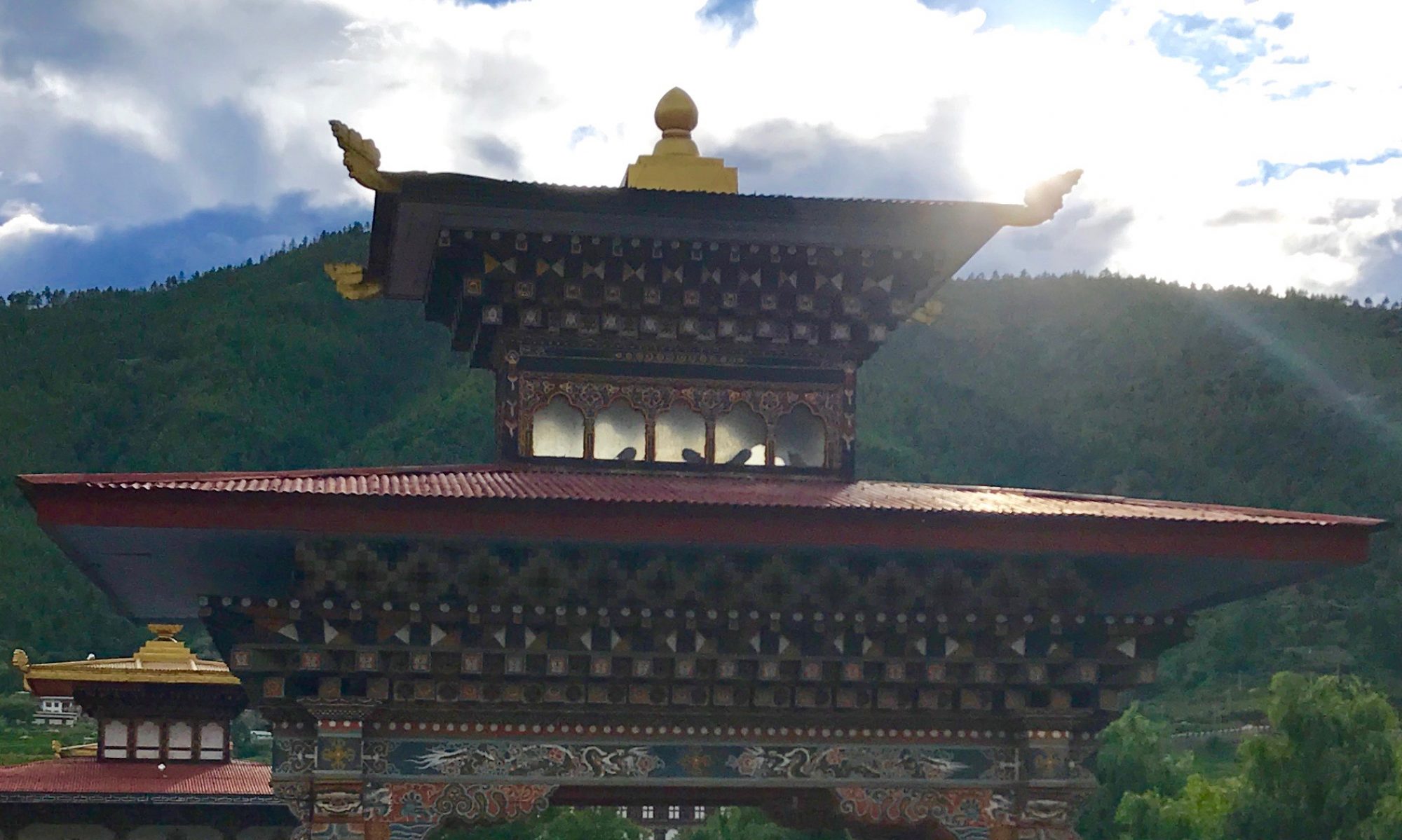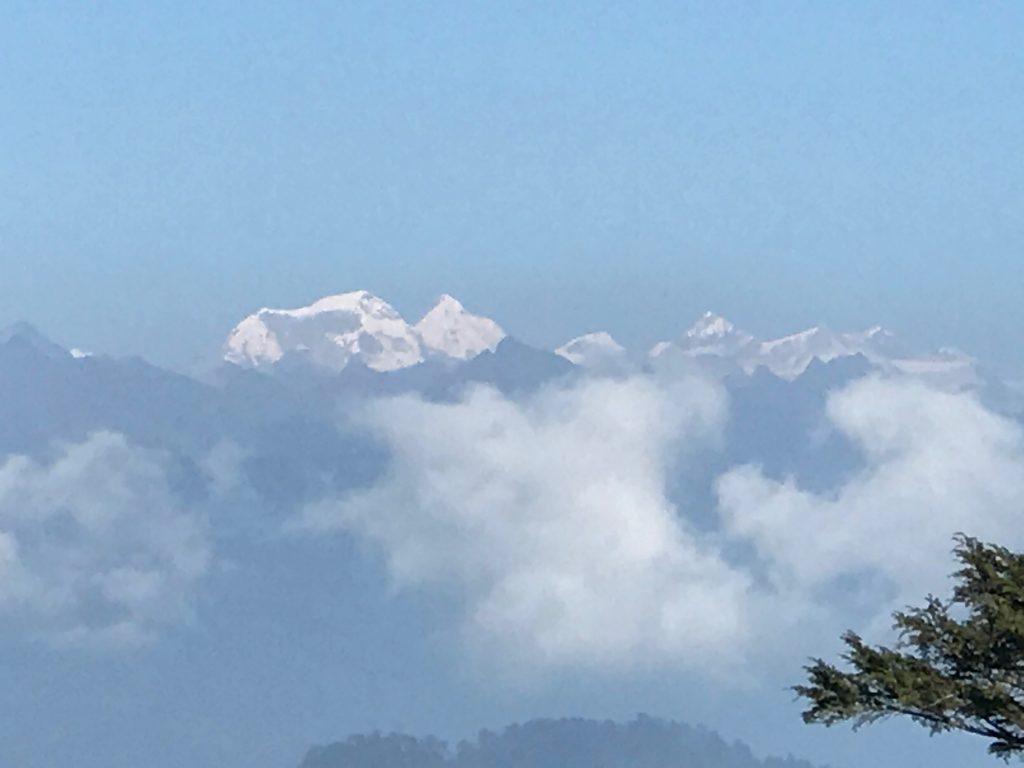
On the 17th, we drove from Punakha to Thimphu, stopping at Dochu La on the way. It was difficult to believe that this was the same place we saw back in July. Here’s a photo from monsoon season for comparison.
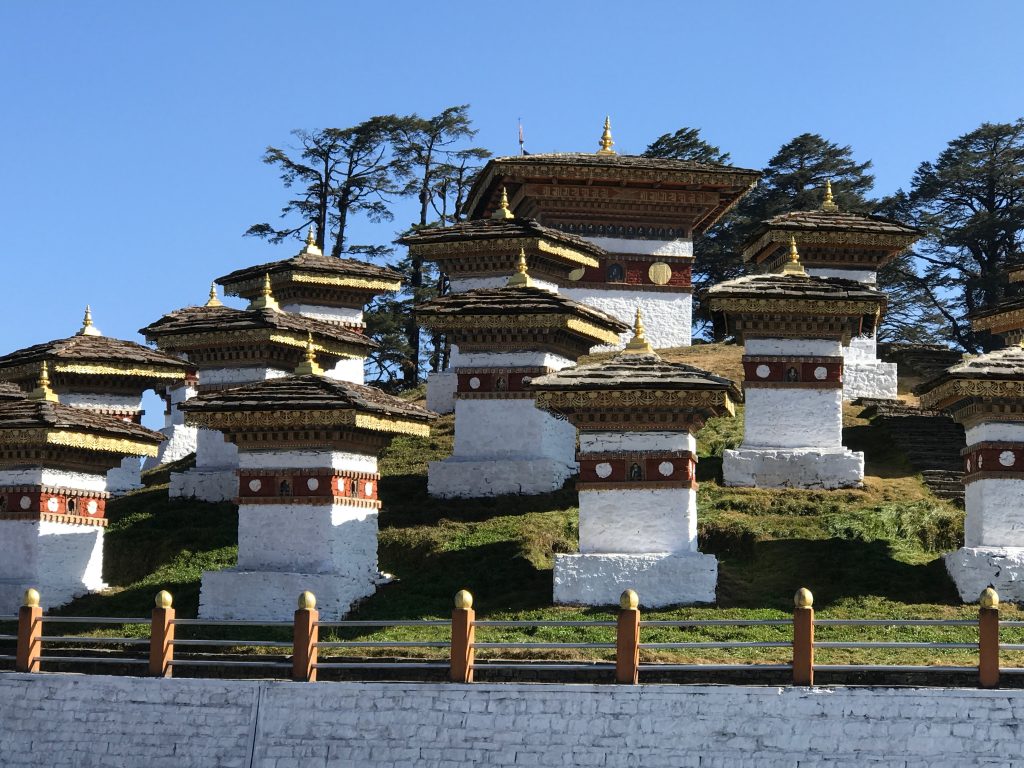
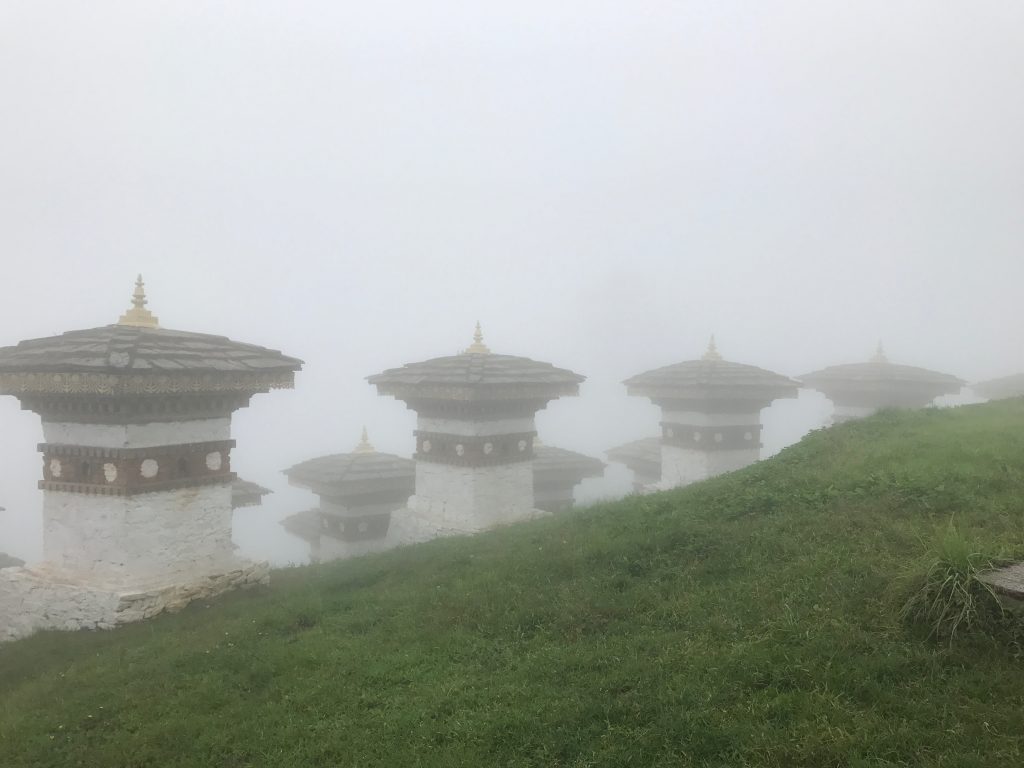
This time, for the first time, we saw the map of the snow peaks visible from Dochu La. The first time around, the map would have seemed ludicrous. This time, we still struggled to link the peaks we could see with those on the map, but the peaks themselves were luminous.
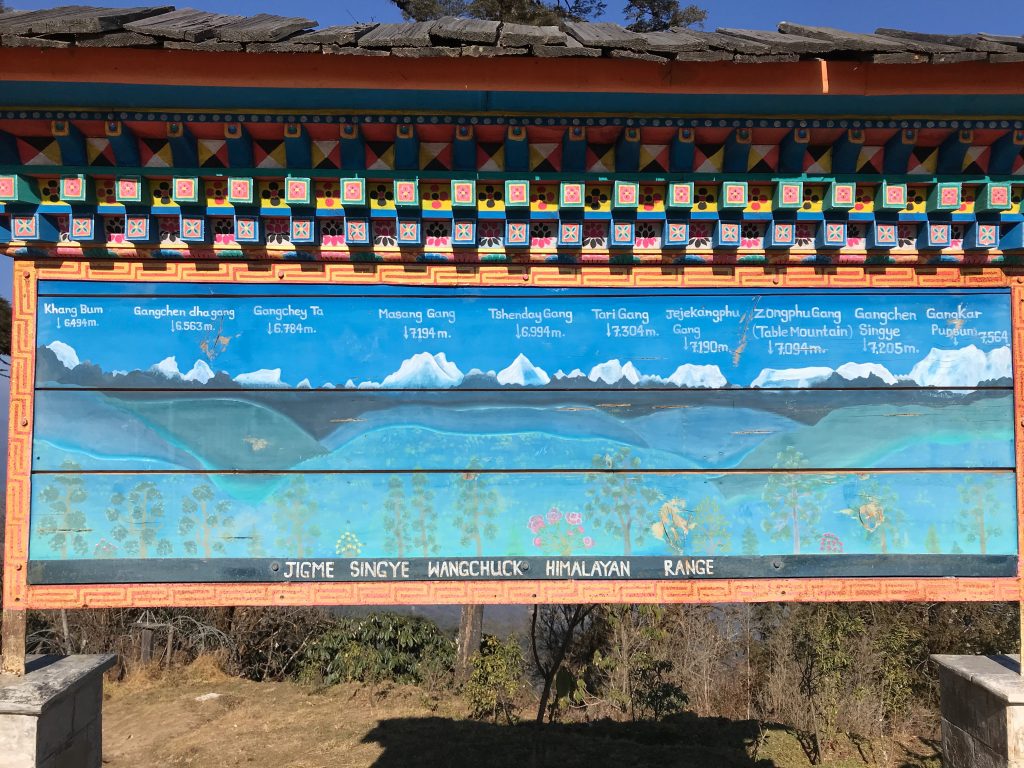
We spent a week in Thimphu, but it went by in a bit of a blur. Here are some highlights:
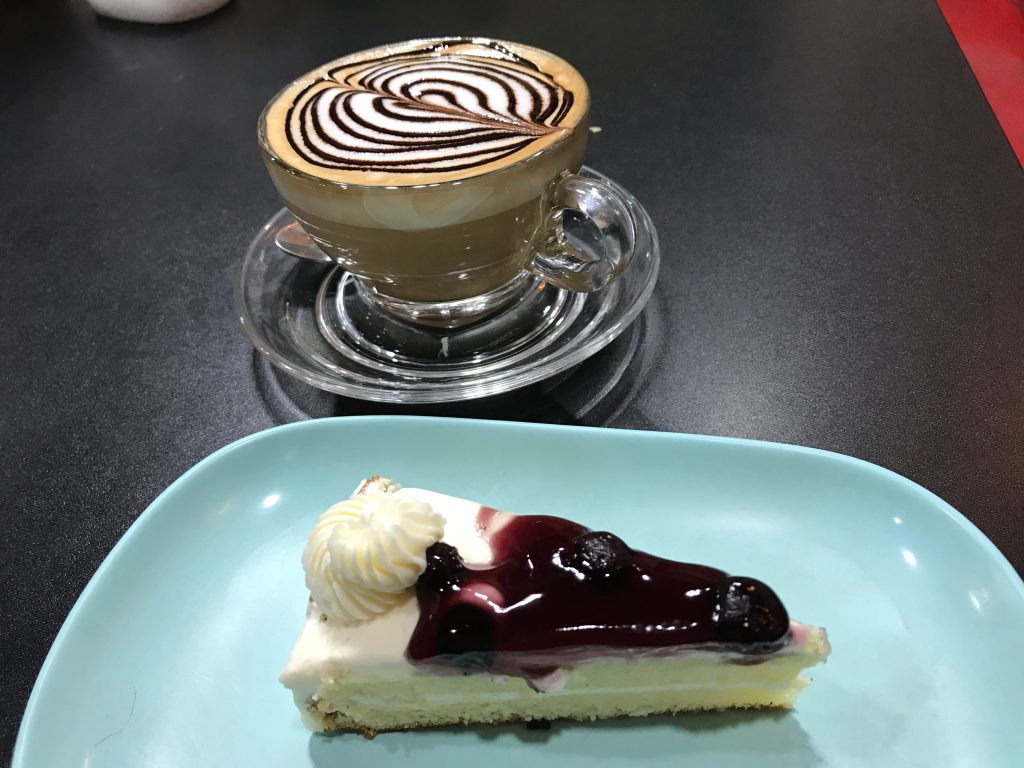

We ate good food, which made everyone happy.
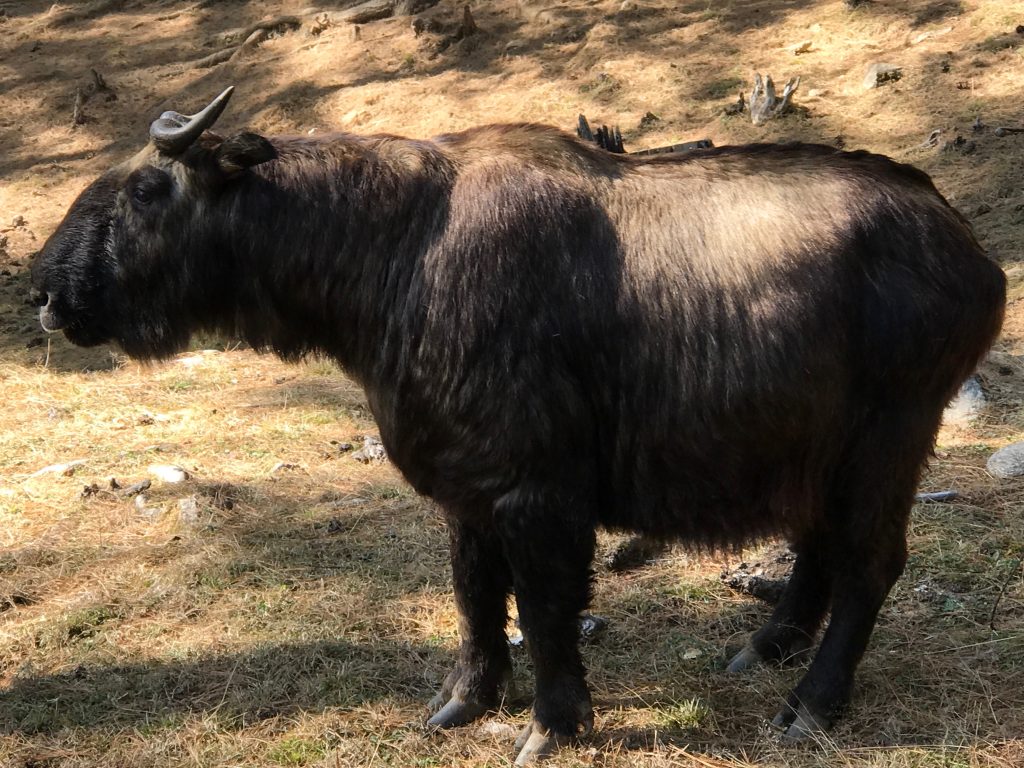
We went to the post office and had stamps made of various friends and family members.

We went to visit the takins at the “un-zoo” above Thimphu. Evidently the fourth king decided that a zoo was not appropriate in a Vajrayana Buddhist kingdom, so the zoo was disbanded and the animals released into the wild. Unfortunately, the takins had decided that they liked living in close connection with humans and being fed, so they wandered the streets of Thimphu, wandering into shops, making a mess, and generally creating havoc. The only thing to do was the recreate a takin preserve to maintain peace between the species.
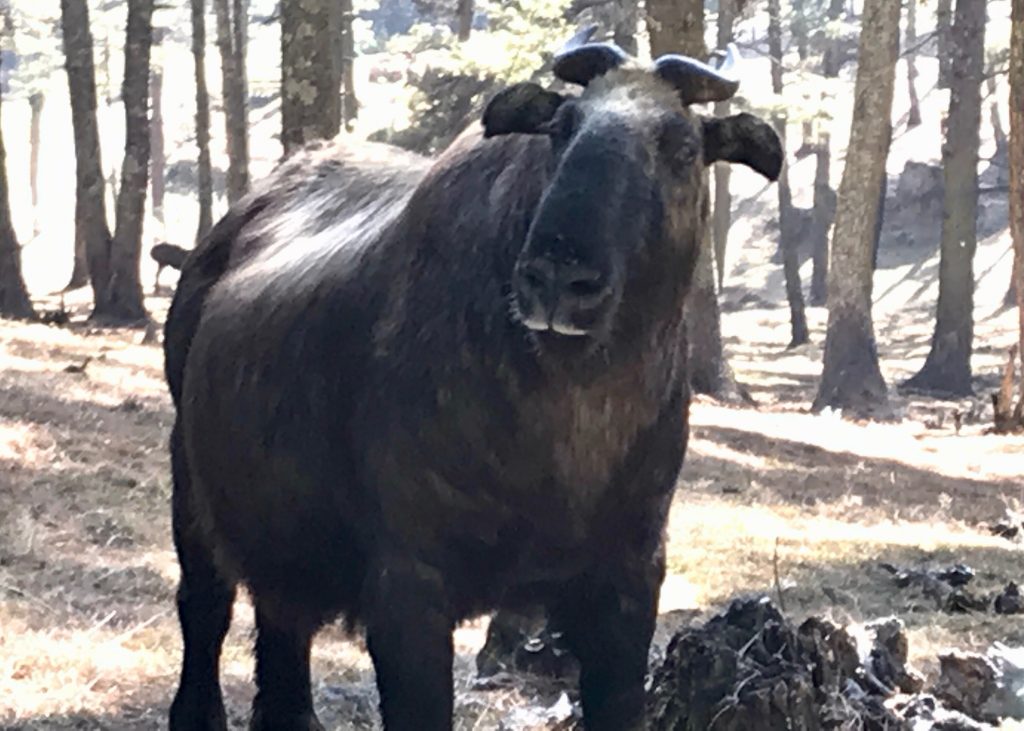
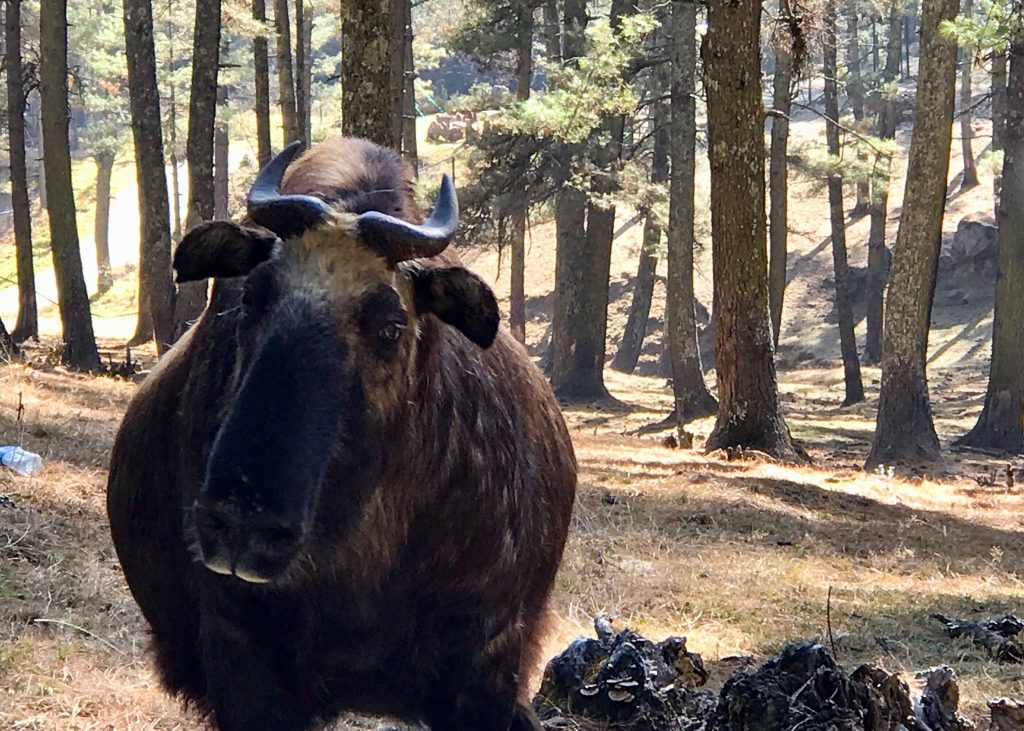
There are also some Sambar deer and other creatures in the un-zoo. Jeremy was a bit of a deer-whisperer.
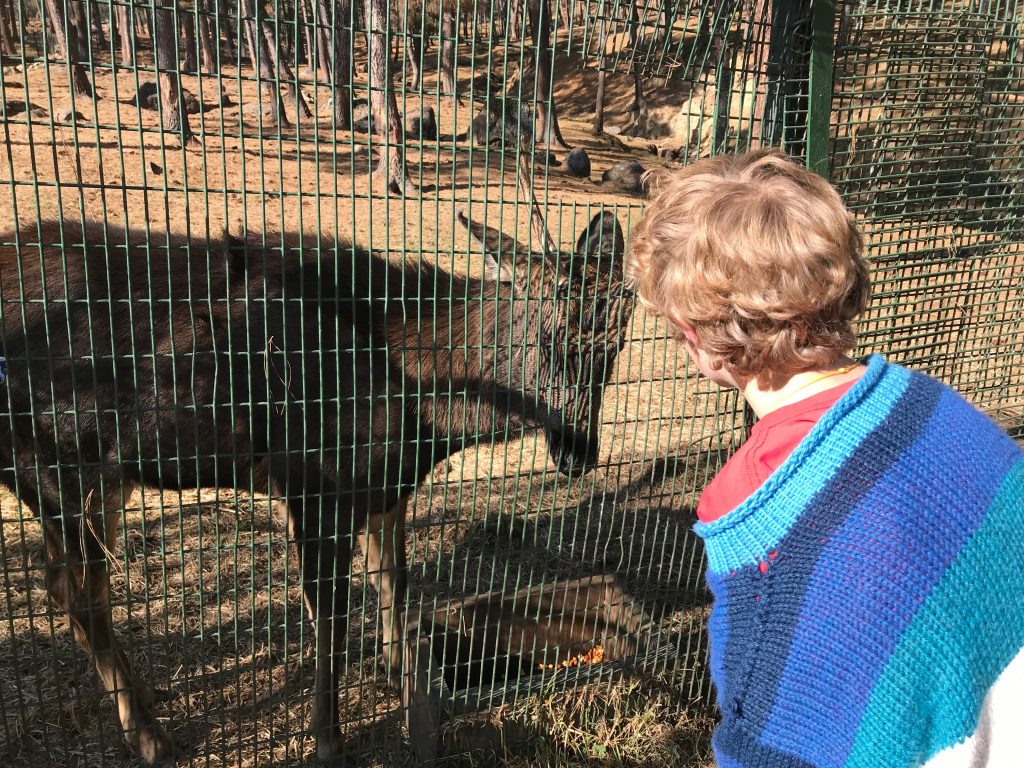
From the Takin Preserve, we went for a hike along the ridge above Thimphu. We enjoyed the views:
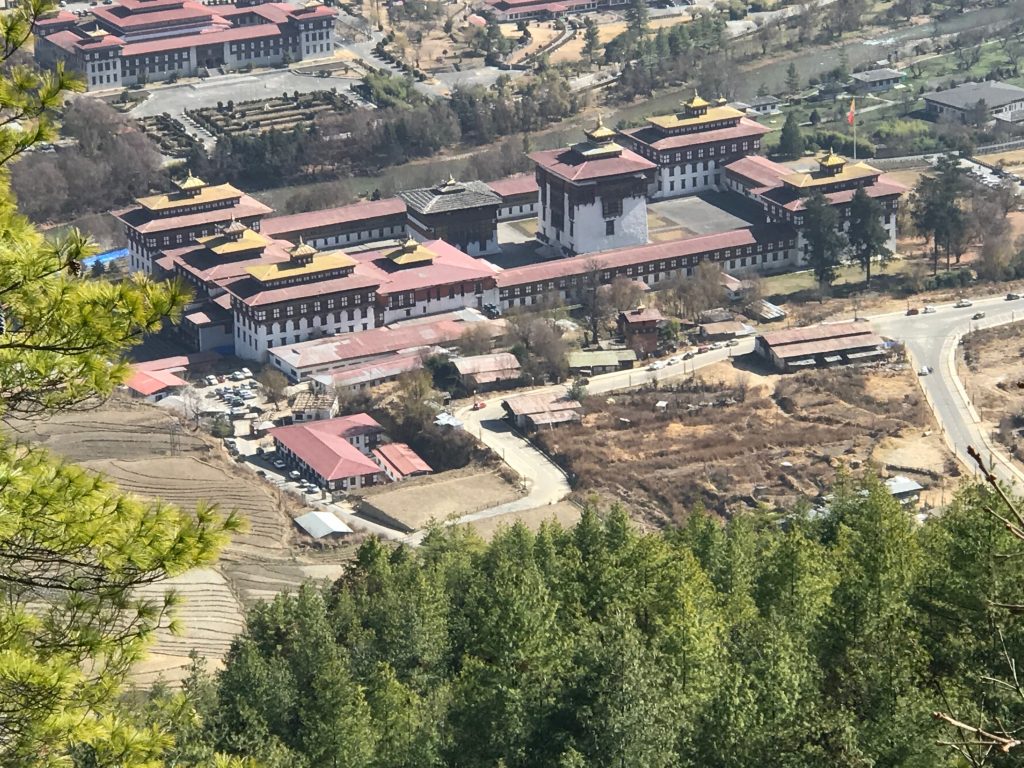

We also liked seeing the restoration work being done at the Wangditse Goemba:
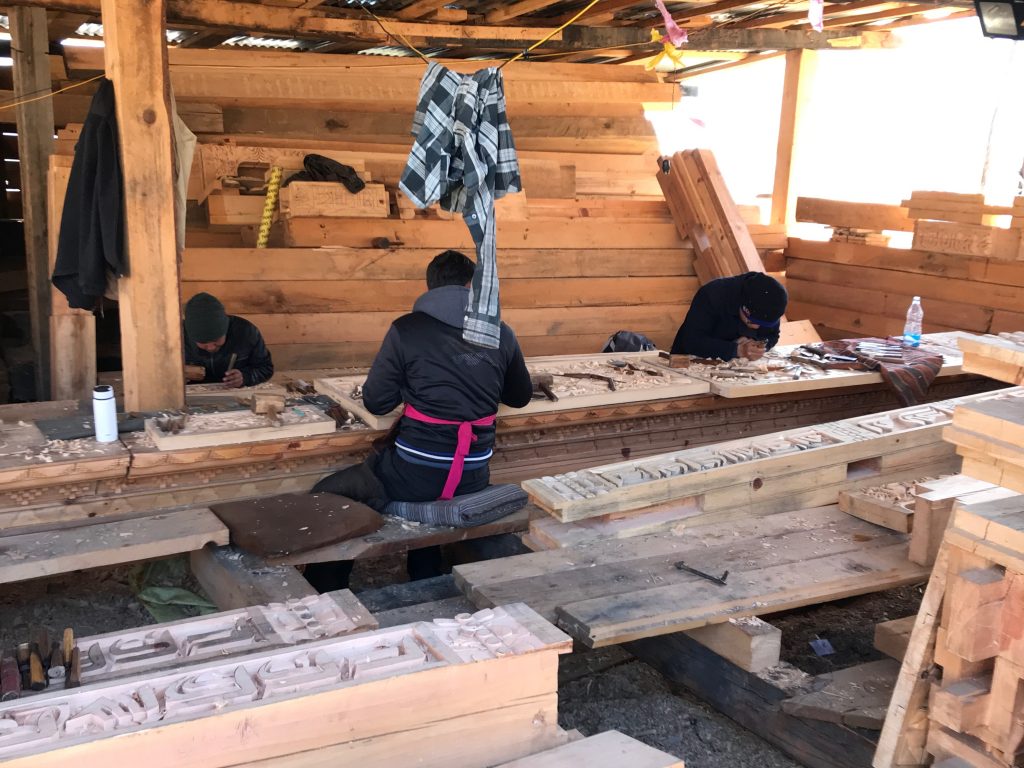
This tree, weeping sap, is probably a chir pine, known for its resin, which the Bhutanese burn for light.
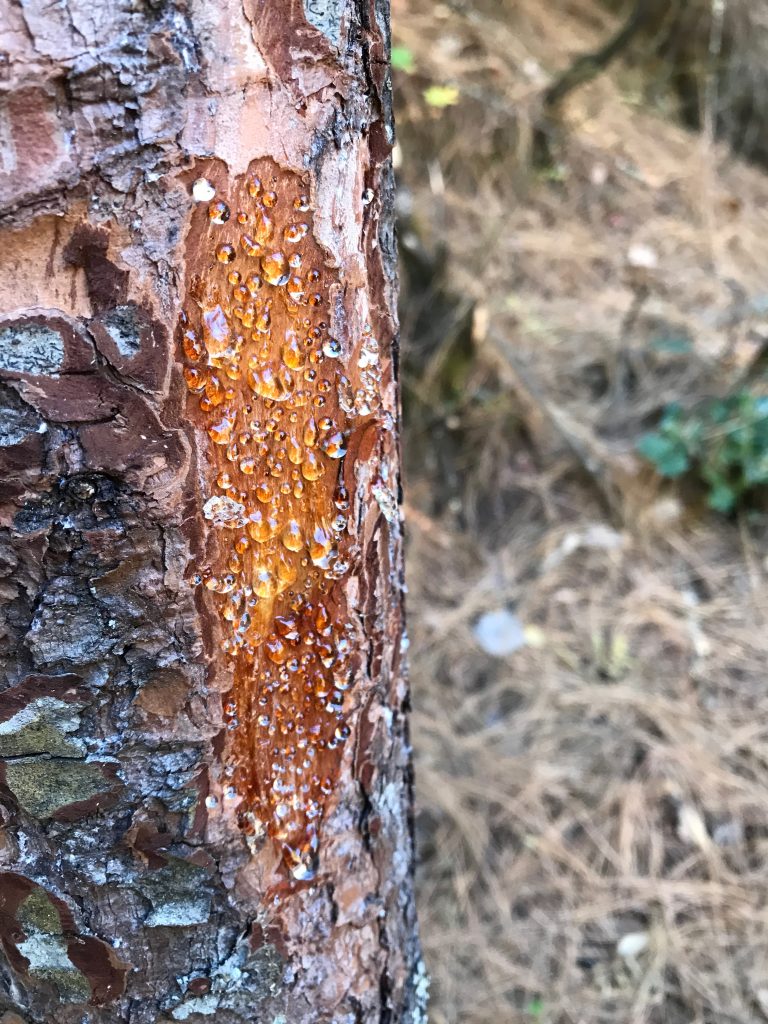
Immigration (route permits, additional entry permits) was of course a priority. The amazing thing about the immigration office is how tiny it is and how much goes on in its endless binders.
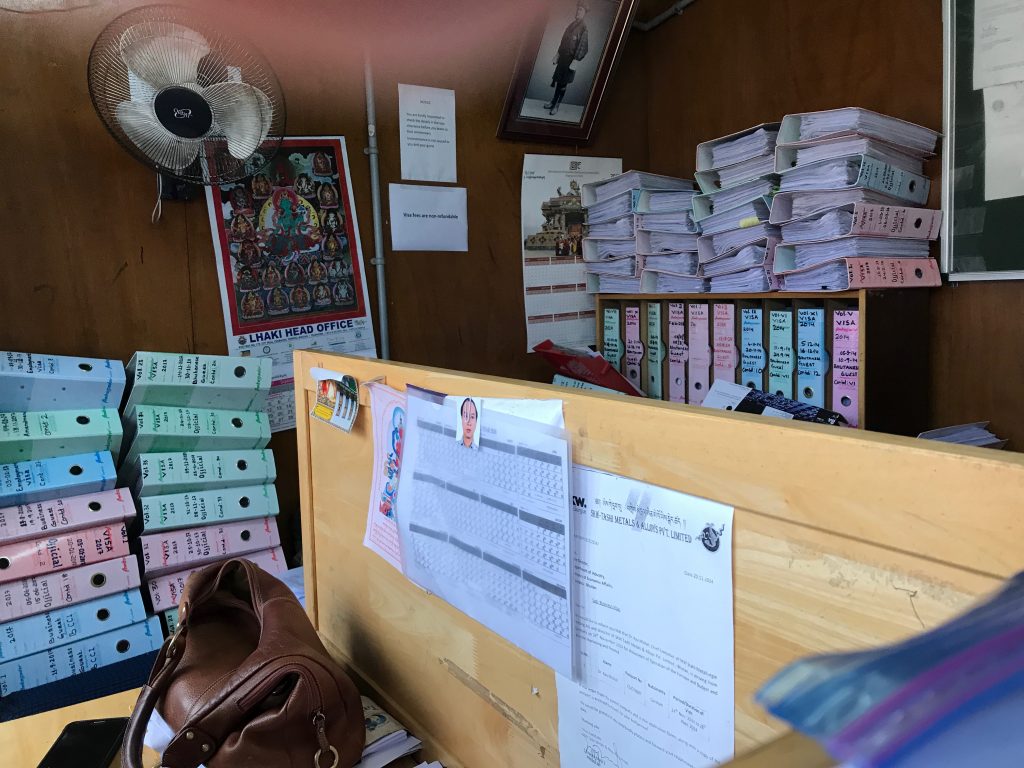
A different day, we met up with Sue and Brian, whom we had first met in Punakha. Brian was a pediatric nephrologist volunteering at the referral hospital and Sue was our bosom buddy for many days. We went to meet up with them at the National Institute for Traditional Medicine, but they got further into the Institute than we did. Brian said the actual hospital was more interesting than the Institute: rooms labeled “Bleeding” and “Enemas” and other intriguing elements.
The (deserted) lobby of the Institute included an introduction to Bhutanese medicine, some key plants, and a sculpture of the Medicine Buddha.
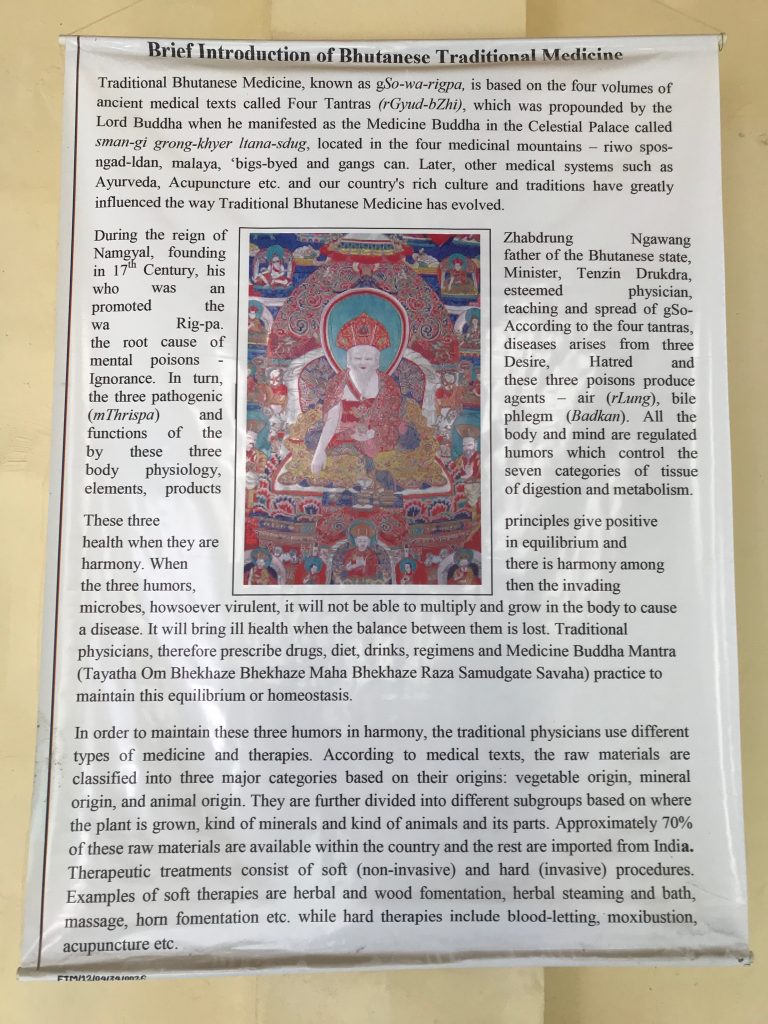
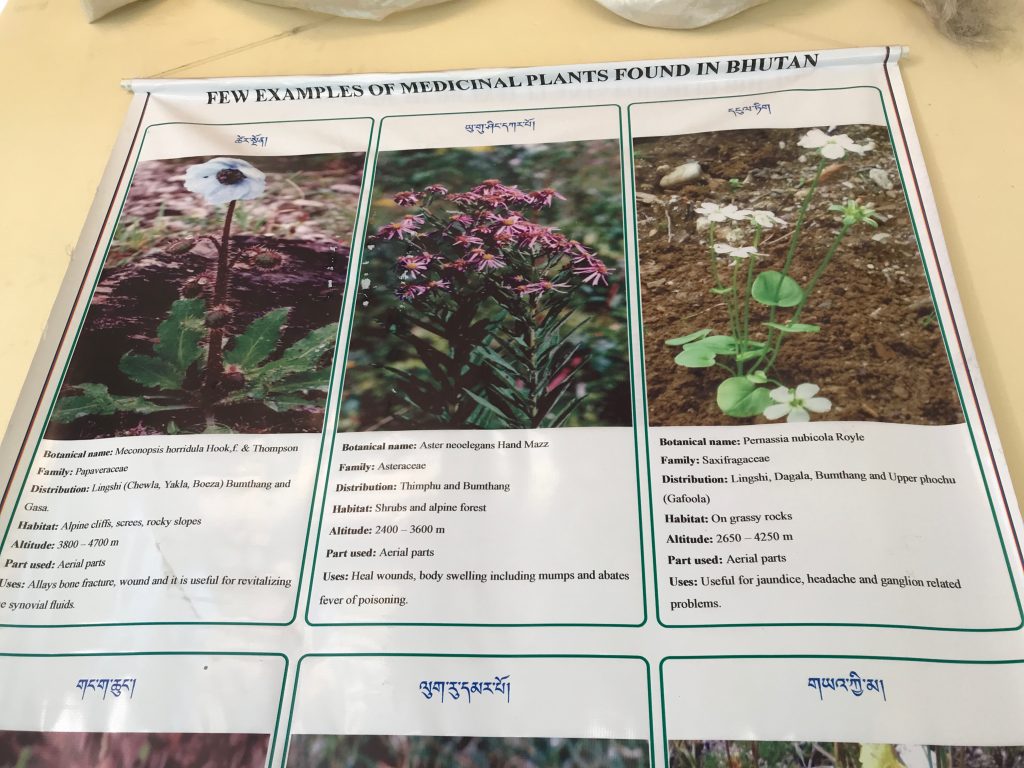
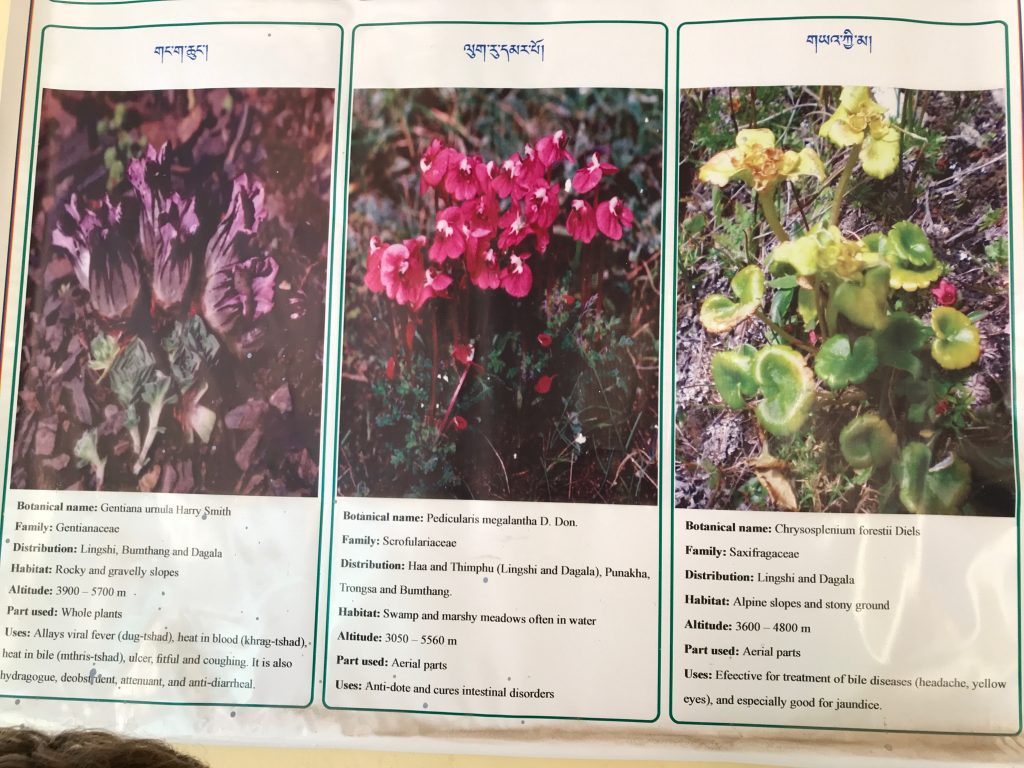
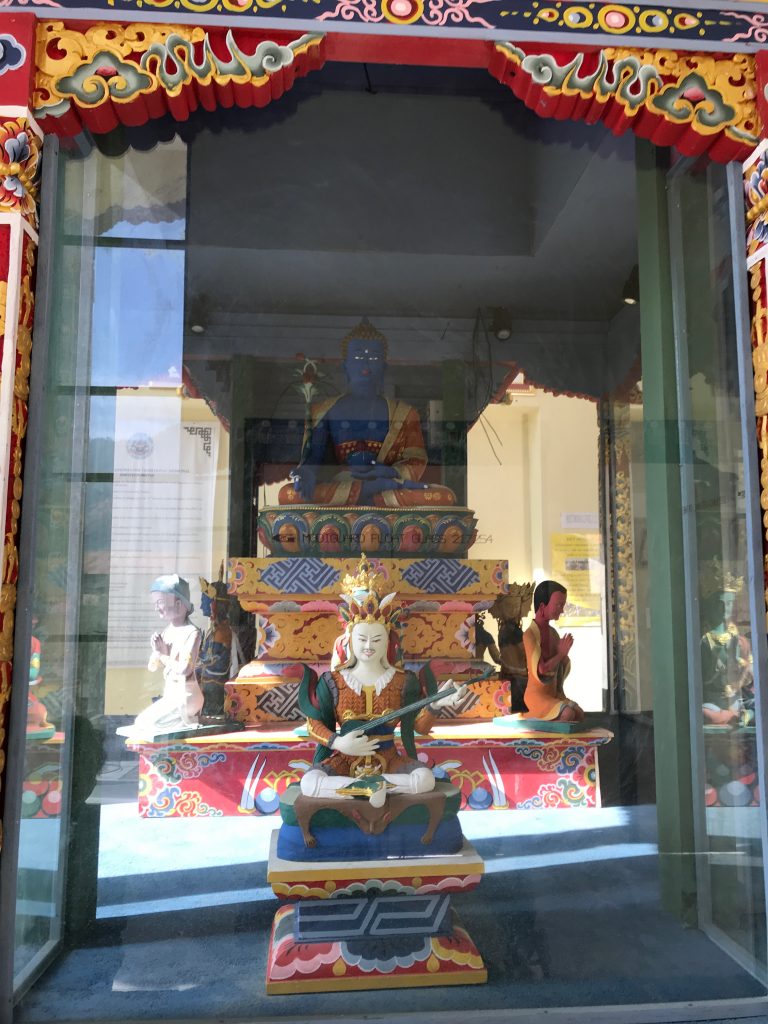
How is it possible we have no photos of Sue and Brian? We were so sad to say goodbye to them. And for Christmas, Sue gave Jeremy and Zoë hand-made hats (modeled here by Jeremy); he also scored a pack of Canadian cards.
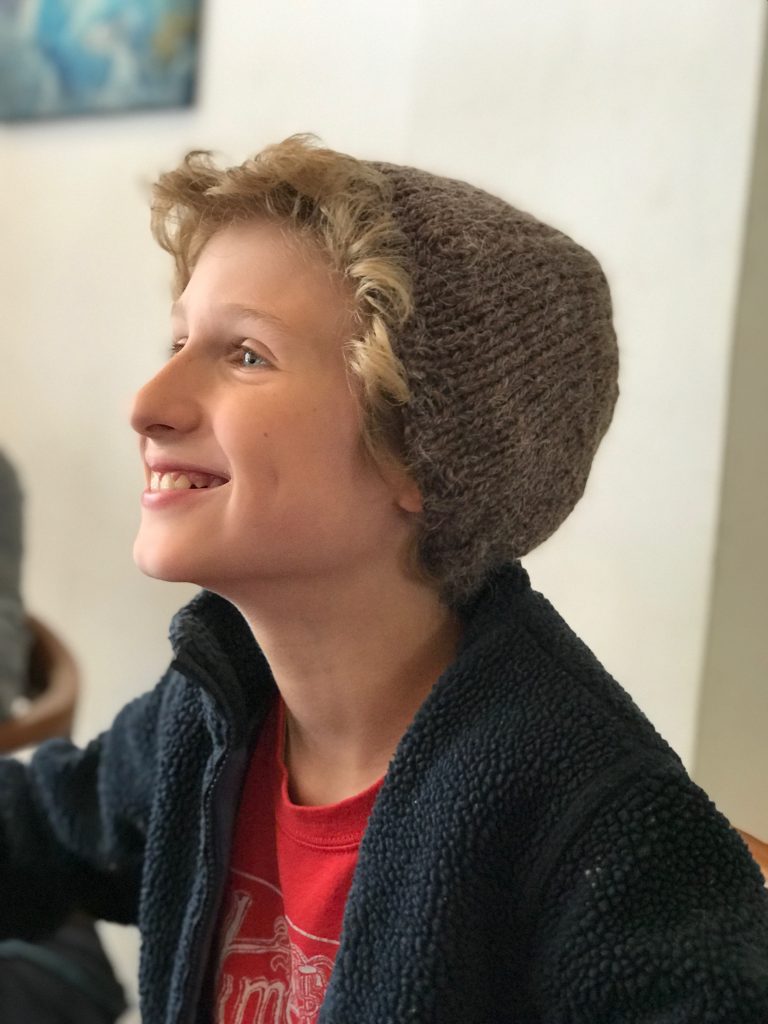
On yet another day, we revisited the Jungshi Handmade Paper Factory, where Pema gave us an excellent tour. We’re still hoping to go back with a decent mic to re-record it. Pema is one of the designers, and we were so impressed with her books and other products.
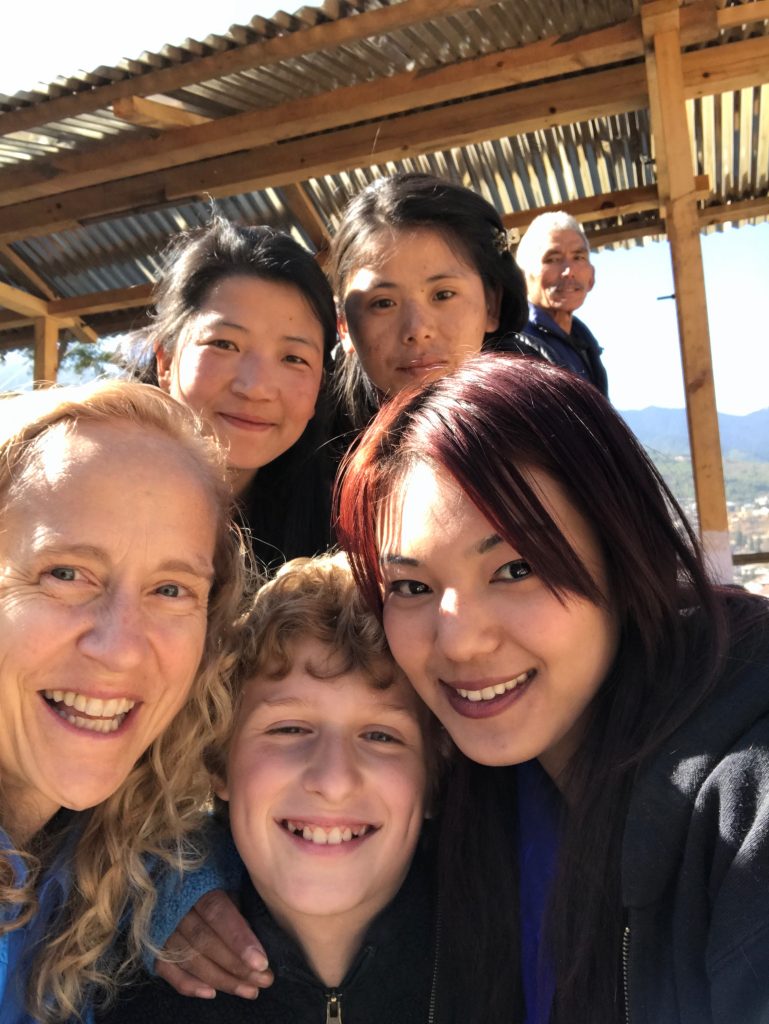
Finally, just as we were getting a little restless, we ran into Ugyen, who was finished ferrying Sherubtse faculty back and forth to the Gender conference at RUB, and he kindly gave us a ride north of Thimphu to Pangri Zampa, near his own childhood home.
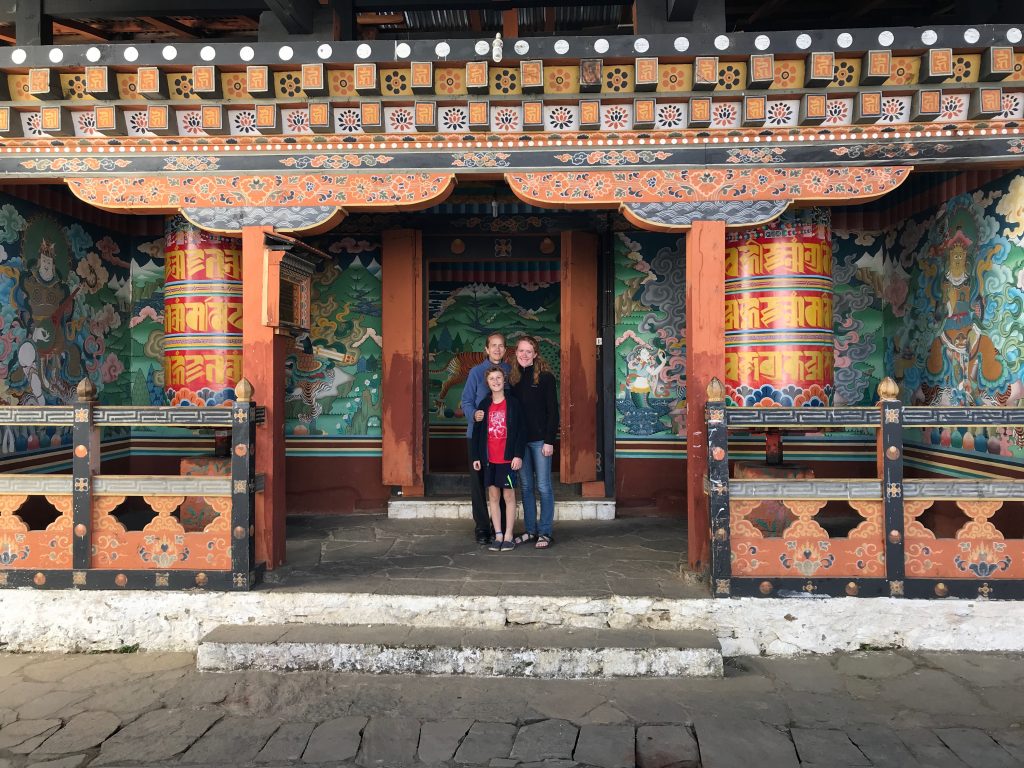
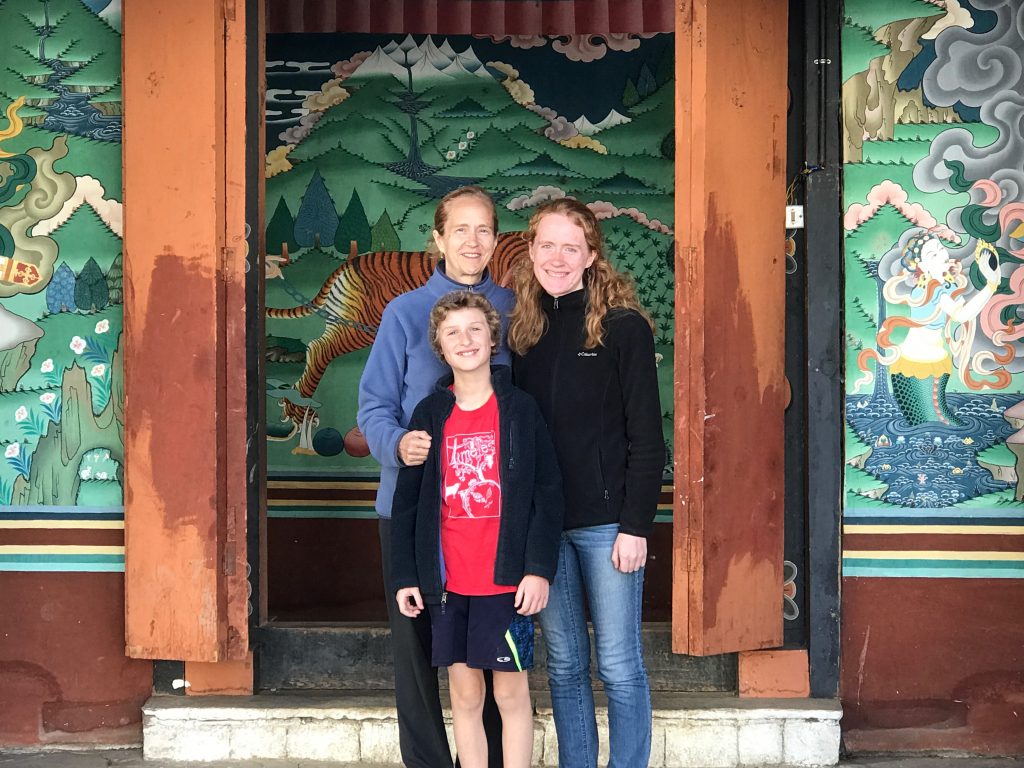
The new Drolma Zingkham Lakhang, built by the Royal Grandmother, is set off by a long stupa wall and includes 21 images of Tara. We couldn’t find a way in, sadly.
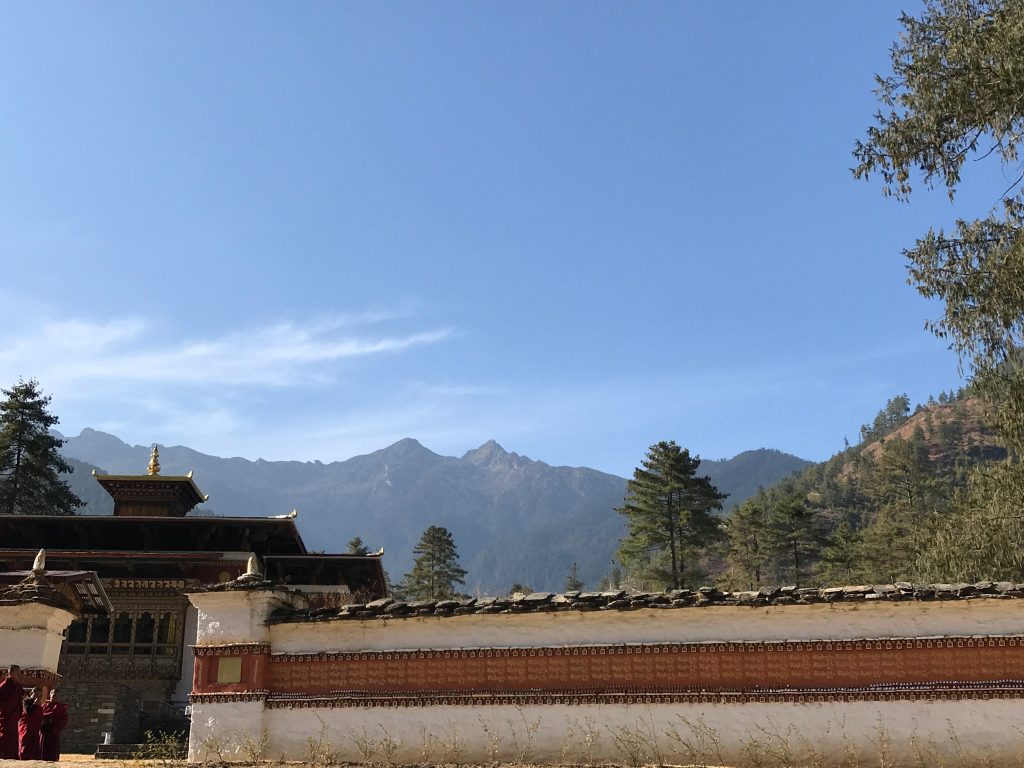
It was a beautiful site, and it felt serendipitous to be able to visit on the spur of the moment, on the eve of our departure for Paro.
